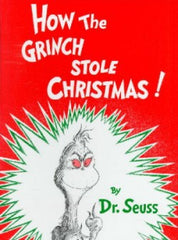Secure Checkout. FREE SHIPPING for Continental U.S. Orders over $60.
Menu
-
- Home
-
About Us
-
The Approach
-
Linking Language & Literacy
-
MindWing Learning
-
Learning Resources
-
SHOP
-
Blog
-
- About MindWing
- Our People
- Contact Us
- Your Account
- Login
-
United States (USD $)

Secure Checkout. FREE SHIPPING for Continental U.S. Orders over $60.
Kick-Off the Kick-Off
January 12, 2011

Is Maryellen Actually “Maryellen Who?”
December 16, 2010 1 Comment
 Theodor Seuss Geisel, better known to the world as Dr. Seuss, was born in 1904 on Howard Street in Springfield, Massachusetts – which is right around the corner from MindWing’s office. The Dr. Seuss National Memorial Sculpture Garden is located at the Springfield Museums near our office as well. The influence of Ted’s (Dr. Seuss’) memories of Springfield can be seen throughout his work.
Theodor Seuss Geisel, better known to the world as Dr. Seuss, was born in 1904 on Howard Street in Springfield, Massachusetts – which is right around the corner from MindWing’s office. The Dr. Seuss National Memorial Sculpture Garden is located at the Springfield Museums near our office as well. The influence of Ted’s (Dr. Seuss’) memories of Springfield can be seen throughout his work.
In keeping with the spirit of the holiday season, we wanted to share a lesson idea from MindWing’s book: East Meets West for the Holidays by Maryellen Rooney Moreau and Judy K. Montgomery. This lesson is based on one of Dr. Seuss’ most beloved holiday stories: How the Grinch Stole Christmas.

Gingerbread Characters and Settings
December 08, 2010

Using the holidays as a context for language interventions can be tough, as it’s important to be inclusive of all cultures and celebrations. From a technology perspective, there just aren’t many great interactive resources about the Festival of Lights (anyone want to make some)? Gingerbread, however, while associated loosely with Christmas, is probably fair game in the public school setting!
Now, while websites with excessive, distracting ads are often something I rule out as a potential therapy resource, sometimes sites that are actually a giant, yet somehow unobtrusive ad can be great...
“Make It Better” through Storytelling
October 25, 2010
 It’s really exciting when a speech-language material is published that provides clinicians with a ready-to-go resource that jibes well with strategies we already have been teaching. Such is definitely the case with the excellent We Can Make it Better program recently released by Think Social Publishing and written by Speech-Language Pathologist Elizabeth Delsandro. We Can Make it Better is a set of 20+ stories in which social interactions go quite wrong due to “unexpected behaviors” by one of the characters. The materials and activities unfold in a very logical therapeutic structure that challenges students to “make it better” by deciding alternative actions for the characters...
It’s really exciting when a speech-language material is published that provides clinicians with a ready-to-go resource that jibes well with strategies we already have been teaching. Such is definitely the case with the excellent We Can Make it Better program recently released by Think Social Publishing and written by Speech-Language Pathologist Elizabeth Delsandro. We Can Make it Better is a set of 20+ stories in which social interactions go quite wrong due to “unexpected behaviors” by one of the characters. The materials and activities unfold in a very logical therapeutic structure that challenges students to “make it better” by deciding alternative actions for the characters...

Use Google Search Stories tool to develop narrative and expository language
October 12, 2010
Every year during the Superbowl, a few commercials stick out from the sea of repetitive beer, snack food, and summer blockbuster ads. This past year, one of the best was Google’s Parisian Love ad, which told the story of an American’s romance with a French woman in a simple and brilliant way, as an unseen character “Googled” various search terms that reflected events in his life. A follow-up ad about a girl switching schools, which I never saw aired, would be even more relatable for kids and is definitely a great model of a complete episode.
These commercials were so popular that Google created a wonderful tool that allows users to make their own Search Stories. Simply pick your search terms and the type of search you want shown in your movie (e.g. web, image, product, map, etc), select the music and upload to a YouTube account (if you have Gmail, you already have a YouTube account)...
Exploring Settings with Google Earth
September 10, 2010
In this post, I will be continuing to describe resources to supplement the lessons in It’s All About the Story, and moving on to the element of Setting. Setting is a key area of instruction for students on the autism spectrum not only because they tend not to observe the “expected behaviors” or script for a given setting, but also because they often leave out details about setting when telling stories to others, thus resulting in loss of a point of reference and confusion on the part of their listener. Students in social thinking/skills groups or individual treatment would therefore benefit from building descriptive skills through the use of the Setting Map contained in It’s All About the Story and other SGM resources...
